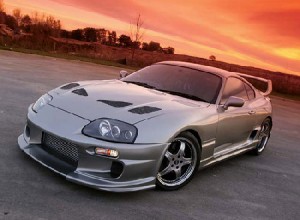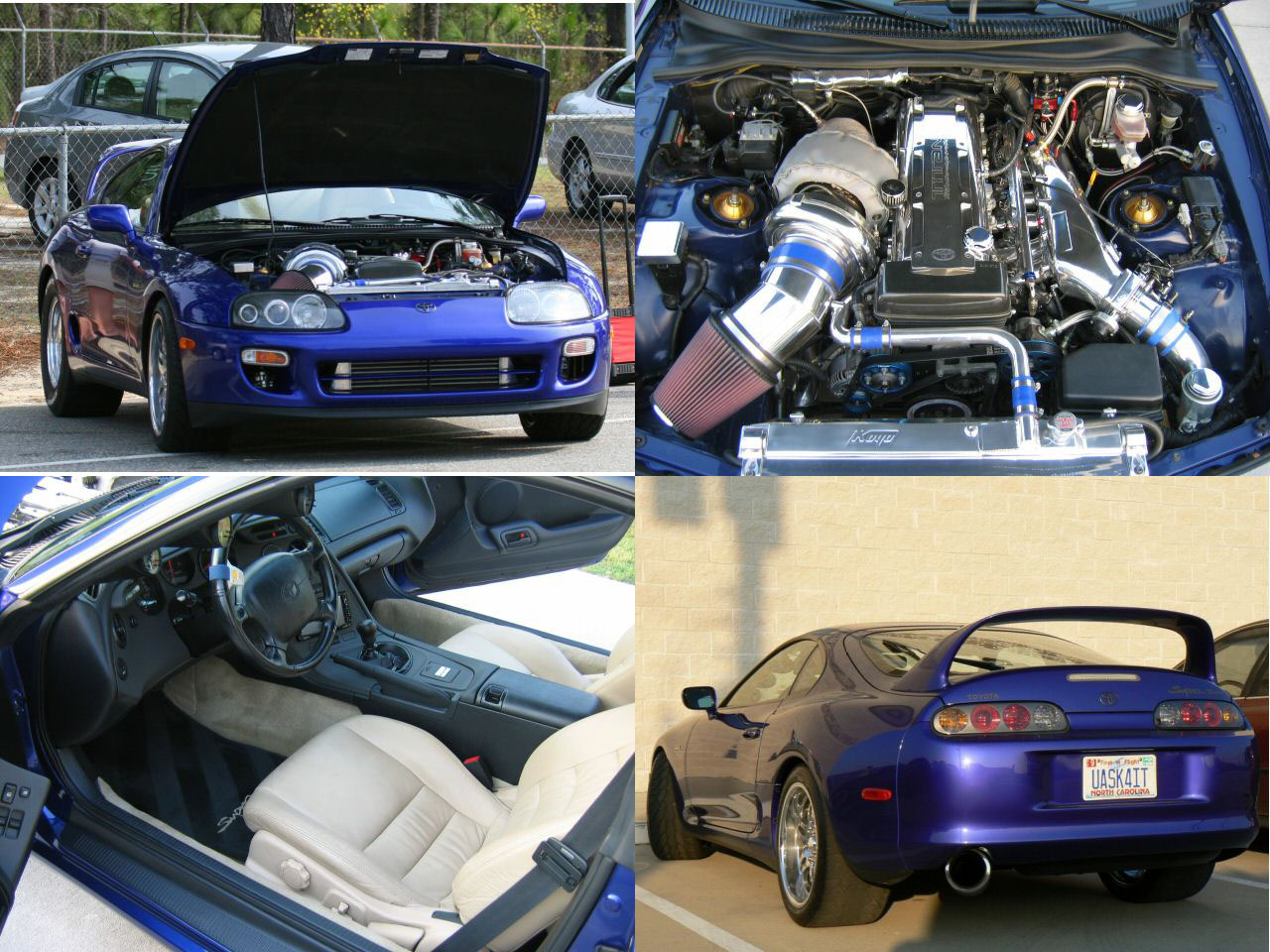As an iconic sports car, the Supra has appeared in numerous video games, movies, music videos and TV shows. Some of the most notable appearances include the Gran Turismo, Forza Motorsport, Need for Speed, and Midnight Club series of video games and the 2001 film, The Fast and the Furious.ContentsThe first generation Supra was based largely upon the Toyota Celica liftback, but was longer by 129.5 mm (5.10 in). The doors and rear section were shared with the Celica but the front panels were elongated to accommodate the Inline-6 instead of the stock Celica's 4-cylinder engine. Toyota's original plan for the Supra at this time was to make it a competitor to the very popular Datsun (now Nissan) Z-car.
1978In April 1978 Toyota began production of the Mark I Supra in Japan, as the Toyota Celica XX. It debuted in the United States in Jan 1979. The USA Mark I (chassis code MA46) was originally equipped with a 110 hp (82 kW) 2,563 cc (2.563 L; 156.4 cu in) 12-valve SOHC inline-6 engine (4M-E). In April 1978, the Japanese Mark I (chassis code MA45) was offered with a 110 hp (82 kW) 2.0 L 12-valve SOHC inline-6 engine (M-EU). The Japanese Supra was equipped with the smaller 2.0 L engine so that buyers wouldn't incur an additional tax under vehicle size and engine displacement regulations. Both were equipped with electronic fuel injection.Drive train options for the Mark I were either a 5-speed manual (W50) or an optional 4-speed automatic transmission (A40D). Both transmissions featured an overdrive gear. The top gear in the 5-speed was its overdrive gear whereas the automatic transmission featured an overdrive gear that would engage at speeds over 35 mph (56 km/h). The drive train for the Supra retained the T series solid rear axle configuration of the Celica in the Japanese MA45 version and a larger F series (and optional Limited Slip Differential) in the MA46 and MA47. The car also came standard with 4-wheel disc brakes and featured a four-link rear suspension with coil springs, lateral track bar, and stabilizer bar. The front suspension consisted of MacPherson struts and a stabilizer bar.In 1981, Toyota completely redesigned the Celica Supra as well as the entire Celica lineup. In Japan, they were known as Celica XX, but everywhere else the Celica Supra name was used. Still being based around the Celica platform, there were several key differences, most notably the design of the front end and fully retractable pop-up headlights. Other differences would be the inline-6 still present in the Supra instead of the inline-4 as well as an increase in length and wheel base to conform with the overall larger engine. Toyota's continued market competition with Nissan is shown by the Supra's use of a rear hatch sun shade to avoid the louvres popularly associated with the Z car. Due to an increase in the Supra's width, it was no longer regarded as a "compact" under Japanese dimension regulations.
On the inside of the Supra one had an option of power windows and power locks as part of the convenience package. The convenience package also included cruise control and special door trim with door pull straps, with an optional sunroof. As for standard features, in the center console there was an extendible map light and a flip-top armrest, which provided storage. Some other features were the tilt steering wheel, deep zippered pockets on the backs of the front seats, and tonneau cover under the liftback. The dashboard also contained a state of the art (at the time) AM/FM/MPX 4-speaker stereo radio, analog clock, and tachometer as part of the instrument panel.* 1 Mark I (1978–1981)
o 1.1 1978
o 1.2 1979
o 1.3 1980
o 1.4 Quick information
* 2 Mark II (1981–1986)
o 2.1 L-type and P-type
o 2.2 1981
o 2.3 1983
o 2.4 1984
o 2.5 1985–1986
o 2.6 Mark IIs around the world
+ 2.6.1 Most of Europe
+ 2.6.2 Great Britain
+ 2.6.3 Australia, Sweden, & Switzerland
+ 2.6.4 New Zealand
+ 2.6.5 Japan
o 2.7 Quick information
* 3 Mark III (1986–1992)
o 3.1 1988
o 3.2 1989
o 3.3 1990
o 3.4 1991
o 3.5 1992
o 3.6 JZA70 and GA70
o 3.7 Turbo A
o 3.8 Quick information
* 4 Mark IV (1993–2002)
* 5 Possible Mark-V
* 6 Motorsport
* 7 Awards
* 8 United States timeline
* 9 References
* 10 External linksThe Toyota Supra is a sports car/grand tourer that was produced by Toyota Motor Company from 1979 to 2002. The styling of the Toyota Supra was derived from the Toyota Celica, but it was both longer and wider.[4] Starting in mid-1986, the Supra (in its third generation, Mark III) became its own model and was no longer based on the Celica. In turn, Toyota also stopped using the prefix Celica and began just calling the car Supra. Due to the similarity and past of the Celica's name, it is frequently mistaken for the Toyota Supra, and vice versa.The Supra also traces much of its roots back to the Toyota 2000GT with the main instance being its engine. The first three generations were offered with a direct descendant to the Toyota Crown's and 2000GT's M engine. All four generations of Supra produced have an inline 6-cylinder engine. Interior aspects were also similar, as was the chassis code "A".
Along with this name and car Toyota also included its own logo for the Supra. It is derived from the original Celica logo, being blue instead of orange. This logo was used until January 1986, when the Mark III Supra was introduced. The new logo was similar in size, with orange writing on a red background, but without the dragon design. That logo, in turn, was on Supras until 1991 when Toyota switched to its current oval company logo. (the dragon logo was a Celica logo regardless of what color it was. It appeared on the first two generations of the Supra because they were officially Toyota Celicas. The dragon logo was used for the Celica line until it too was discontinued.)In 1998, Toyota ceased sales of the Supra in the United States and in 2002 Toyota officially stopped production of the Supra in Japan.As an iconic sports car, the Supra has appeared in numerous video games, movies, music videos and TV shows. Some of the most notable appearances include the Gran Turismo, Forza Motorsport, Need for Speed, and Midnight Club series of video games and the 2001 film, The Fast and the Furious. toyota supra
toyota supra
toyota supra toyota supra
toyota supra toyota supra
toyota supra toyota supra
toyota supra toyota supra
toyota supra toyota supra
toyota supra toyota supra
toyota supra toyota supra
toyota supra toyota supra
toyota supra toyota supra
toyota supra
toyota supra best 2007 photos top
8:53 PM
kresek



